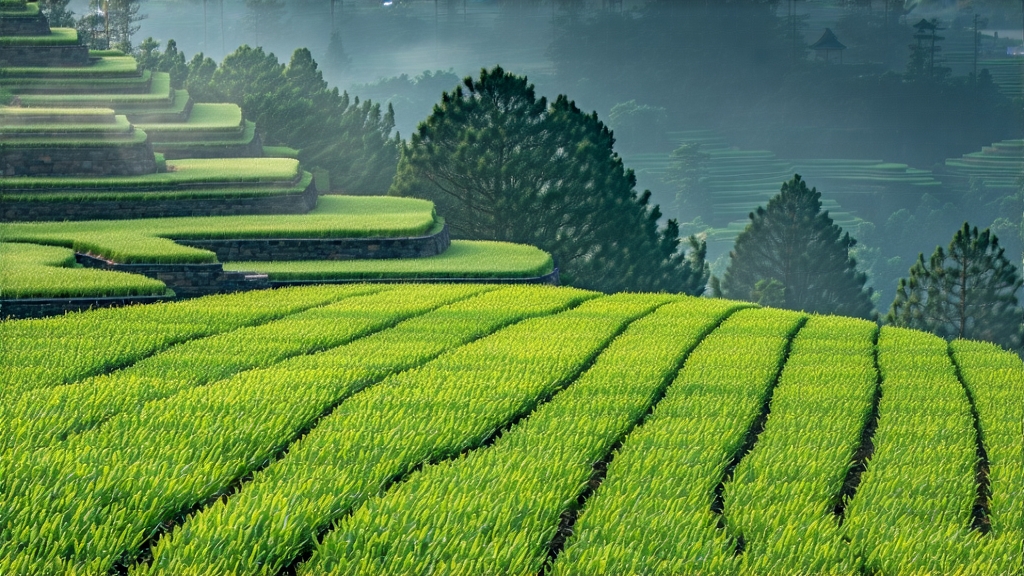
Tucked high in the mist-crowned ridges of Sichuan’s Mt. Meng, Meng Ding Huang Ya has been whispered about by tea traders for twelve centuries. Unlike its green cousin Long Jing or the smoky black Lapsang, this yellow tea has always moved in shadows: produced in tiny lots, rushed to emperors, then slipping back into obscurity. Today, only a few thousand kilograms leave the mountain each spring, making it a living fossil that even seasoned tea hunters struggle to locate. Yet one sip explains why Song-dynary poets called it “liquid sunrise trapped in a leaf.”
History: from elixir to exile
Buddhist monks planted the first tea gardens on Meng Ding during the Tang era (618-907 CE). The ridge’s perpetual cloud cover slowed leaf growth, concentrating amino acids and creating a natural sweetness. When the Song court moved to nearby Chengdu, local magistrates presented the bud-only pluck as tribute. By the Ming, imperial chefs discovered that a gentle “sealed yellowing” step—unique to yellow tea—turned the leaves from grassy to honeyed, and Meng Ding Huang Ya became the emperor’s dawn beverage. After 1911, with the fall of the Qing, the intricate process was deemed too labor-intensive; most farmers reverted to green-tea making. The craft survived only because three hereditary families hid manuscripts in bamboo tubes and continued micro-batches for temple offerings.
Micro-terroir: why the mountain matters
Mt. Meng rises 1,450 m where the Sichuan basin meets the Tibetan plateau. Warm daytime valley air meets cold Himalayan downdrafts, knitting a fog that blocks 40 % of sunlight. The slow photosynthesis raises L-theanine and lowers catechins, giving the tea its signature brothiness minus the astringency. Soils are Devonian sandstone rich in selenium and zinc; roots absorb these minerals, translating into a faint metallic snap that professional cuppers liken to the finish of a Premier Cru Chablis.
Pluck standard: one bud, no leaf, before Qingming
Harvest lasts exactly ten mornings around the 4th of April. Only the unopened bud, sheathed in down like a newborn deer, is taken. Workers wear cotton gloves to prevent sweat-borne oxidation, and baskets are lined with fresh banana leaves to keep the buds below 18 °C. A master plucker’s daily haul is 600 g—barely enough for one imperial tribute box in dynastic times.
Craft: the six-day secret choreography
- Sha Qing (kill-green): 180 °C for 90 s on a pear-wood wok, hand-tossed 70 times to halt oxidation at 15 %.
- Men Huang (sealed yellowing): the leaves are wrapped in steamed rice paper, then buried under a 5 cm blanket of wet hemp cloth. For 48 h the pile hovers at 35 °C and 85 % humidity; chlorophyll degrades into pheophytin, turning the leaf ochre from the edge inward.
- Song Huang (loosening): every 6 h the master unwraps, fluffs, and re-wraps, judging by aroma if the “yellowing” is even. The scent must move from cut grass to warm pumpkin.
- Low-temperature drying: 60 °C charcoal embers under a bamboo tray for three hours; moisture drops to 5 % while Maillard notes of toasted sesame emerge.
- Resting: the tea is placed in unglazed clay jars for 30 days so residual heat dissipates and flavors marry.
- Final selection: only buds that have turned golden-yellow without red edges pass; rejects become fodder for yellow-tea scented incense.
Grades & visual code
Imperial Sparrow Tongue: ≤1 cm bud, uniform gold down, liquor bright apricot.
Palace Needle: 1–1.2 cm, 70 % down, liquor deeper amber with jade ring on cup lip.
Fragrant Yellow: 1.2–1.5 cm, 50 % down, liquor honey, sold mostly in Chengdu tea houses.
Storing: the opposite of puer
Unlike post-fermented puer, Meng Ding Huang Ya wants to stay dormant. Vacuum-sealed, nitrogen-flushed, and kept at 5 °C, it ages only six months, developing dried-longan notes. After a year it flattens; after two it becomes woody. Buy only what you will drink within the spring.
Water philosophy: softness equals sweetness
TDS (total dissolved solids) should be